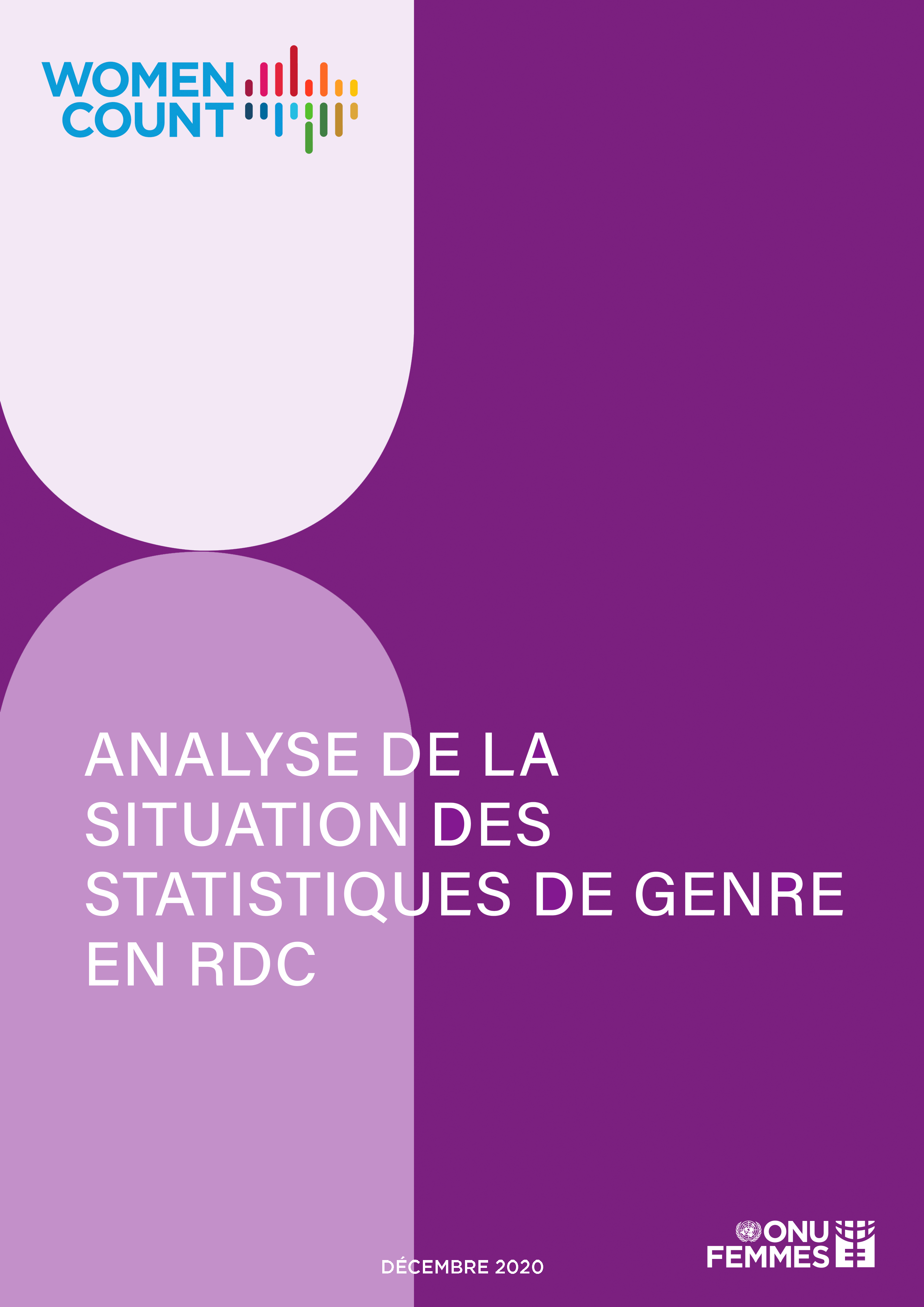
English
The situation analysis of gender statistics for the Democratic Republic of Congo was conducted in 2020 as part of the Women Count programme. Gender statistics have a dual purpose: on the one hand, they enable the measurement of progress towards the Sustainable Development Goals, and on the other hand, they can be used as accountability tools, to enable the development, monitoring and evaluation of public policies and programmes aimed at promoting gender equality and women's empowerment.
The situation analysis in this report covers the following areas:
- The institutional environment related to gender statistics
- The availability, quality and use of gender statistics in the DRC
- The mechanisms for communication and dissemination of gender statistics in the country
- The level of technical knowledge of producers and users and any training/capacity building needs in this area.
In DRC, 70% of thegender statistics needed are not covered by the national statistical system due to the weakness of the statistical supply. On this basis, the analysis faciliated a set of recommendations to the government, the Ministry in charge of planning, the INS, the Ministry of Gender and partner UN agencies to strengthen the production, analysis and dissemination of gender statistics and to better inform public policies and development initiatives.
Française
L’analyse de la situation des statistiques de genre a été réalisée en République Démocratique du Congo en 2020 dans le cadre du programme phare ‘Les Femmes Comptent’. Les statistiques de genre ont un double intérêt : elles permettent, d’une part, la mesure du niveau de réalisation des objectifs de développement durables conformément aux priorités fixées en la matière et, d’autre part, l’élaboration, le suivi et l’évaluation des politiques et programmes publics visant à assurer l’égalité entre les sexes et l’autonomisation des femmes.
Une analyse de situation, objet de ce premier rapport, a mis en lumière les points ci-après :
- L’environnement institutionnel lié aux statistiques genre ;
- La disponibilité, la qualité et l’utilisation des statistiques genre sur la RDC ;
- Les mécanismes de communication, diffusion des statistiques genre en œuvre dans le pays ;
- Le niveau de connaissance technique des producteurs et utilisateurs et les éventuels besoins de formations/renforcement des capacités dans le domaine.
Pour le cas de la RDC, il a été observé que 70% de cette demande de statistique genre ne sont pas couverts par le système statistique national en raison de la faiblesse de l’offre statistique. Sur cette base, l’analyse a permis d’adresser des recommandations à l’endroit du Gouvernement, du Ministère en charge du plan, de l’INS, du Ministère du genre et des Agences des Nations Unies pour renforcer la production, analyse et diffusion des statistiques genre et afin de mieux informer les politiques publiques et les initiatives de développement.
